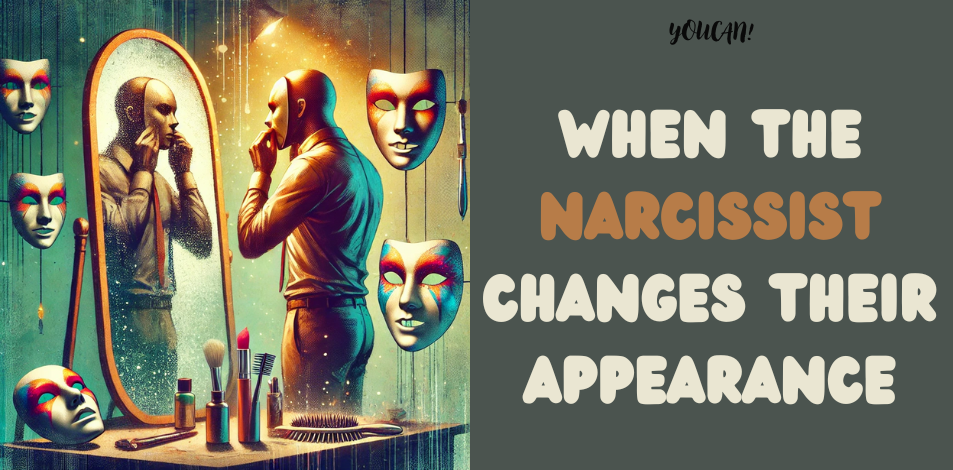
When a narcissist changes their appearance, it often signifies more than just a desire for physical transformation. For narcissists, appearance is closely tied to their self-image, self-worth, and ability to manipulate others’ perceptions. A change in their looks can be a strategic move aimed at gaining more admiration, asserting control, or maintaining relevance in the eyes of others. Below are several reasons why narcissists alter their appearance and the psychological motivations behind such transformations.
Seeking Validation
Narcissists crave attention and validation from others, and their appearance often serves as a tool to get it. Whether it’s through a new hairstyle, cosmetic surgery, or a drastic fashion change, altering their appearance can be a way to draw more attention to themselves. Narcissists may invest heavily in their looks because they equate external beauty with personal value. A change in appearance might be a way to gain renewed admiration and praise from their social circle, feeding their insatiable need for validation.
They may also obsess over staying youthful or attractive to maintain their sense of superiority. Any signs of aging or imperfection threaten their inflated self-image, leading them to constantly reinvent their appearance to remain the center of attention.
Control and Manipulation
A change in appearance can also be a method of controlling how others perceive them. Narcissists are highly attuned to how they are viewed by others, and altering their looks is one way to manipulate this perception. For instance, they may adopt a more professional or polished look to project an image of success, or they might drastically change their appearance to shift the dynamic in a personal relationship.
In romantic relationships, for example, a narcissist might change their appearance to reignite a partner’s interest or to provoke jealousy. The change serves as a psychological tool to manipulate emotions, exerting control over how others react to them.
Masking Insecurity
Despite their outward confidence, narcissists are often deeply insecure. Their reliance on external validation leaves them vulnerable to feelings of inadequacy. A change in appearance can be a way for them to hide these insecurities. By presenting a new, improved version of themselves, they attempt to mask their internal struggles and bolster their self-esteem.
Related : 9 Ways Narcissists Behave When They Fear Exposure
This behavior is especially common during periods of stress or failure. When a narcissist feels their ego has been bruised or their reputation tarnished, they might radically alter their appearance as a form of psychological armor, presenting an image that helps them avoid confronting their true feelings of inadequacy.
Maintaining Relevance
Narcissists fear being forgotten or losing their influence over others. A change in appearance can be a tactic to remain relevant, especially in social or professional circles where they feel their influence waning. By constantly reinventing their looks, they can keep people focused on them, ensuring that they remain the subject of attention and admiration.
In social media-driven environments, this behavior becomes even more pronounced. Narcissists may update their image frequently with the latest fashion trends, physical enhancements, or lifestyle changes to maintain an aura of success and desirability.
Projecting Superiority
For narcissists, appearance is often linked to their need to feel superior to others. A dramatic change in their looks may be aimed at setting themselves apart from their peers. Whether through expensive clothing, exclusive cosmetic treatments, or adopting a unique style, the goal is to project an image of being better than everyone else.
They may also use their appearance as a status symbol, signaling wealth, success, or power. This projection of superiority helps them maintain their inflated sense of self and reinforces their belief that they are more deserving of attention and admiration than others.
Escaping Criticism
When faced with criticism or rejection, narcissists often deflect by altering their appearance. A new look allows them to distance themselves from any negative feedback they might have received and to reassert control over how others perceive them. It becomes a way of saying, “That wasn’t the real me, but this is.”
This tactic allows them to avoid self-reflection or accountability for their flaws. Instead of addressing the underlying issues, they focus on changing the external to shift attention away from their internal problems.
Conclusion
When a narcissist changes their appearance, it’s rarely a simple case of self-improvement. These changes are often deeply tied to their need for validation, control, and superiority. Whether driven by insecurity, a desire to manipulate others, or the need to stay relevant, the narcissist’s appearance is a key component of their carefully crafted image. For narcissists, appearance is not just skin deep; it is a reflection of their fragile ego and a tool for maintaining the admiration and attention they crave.




